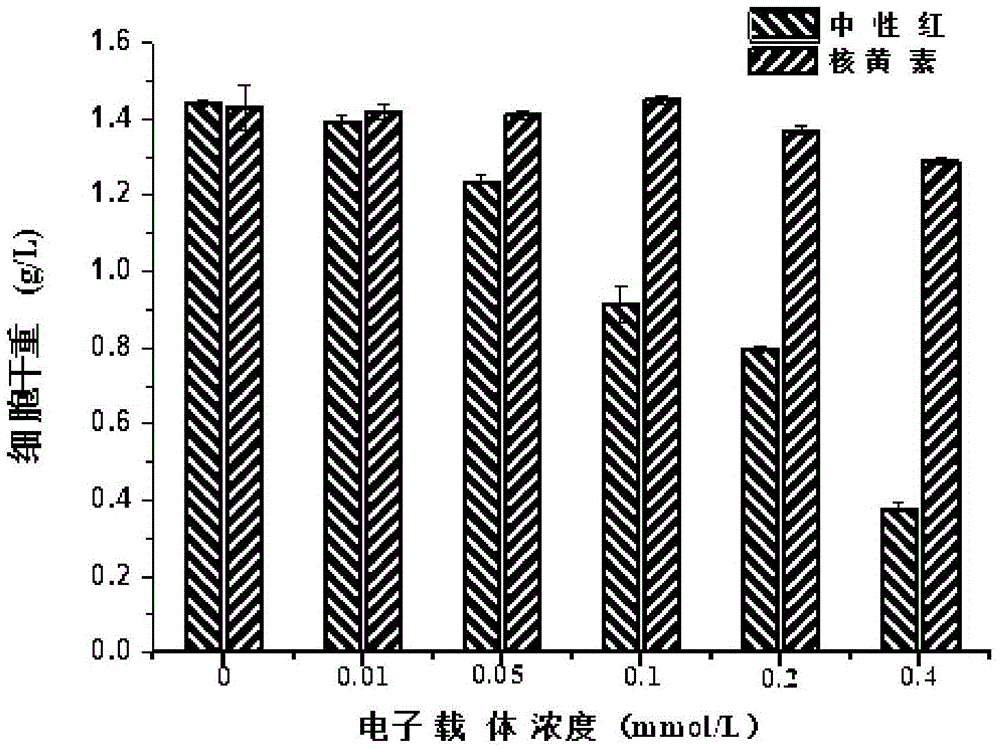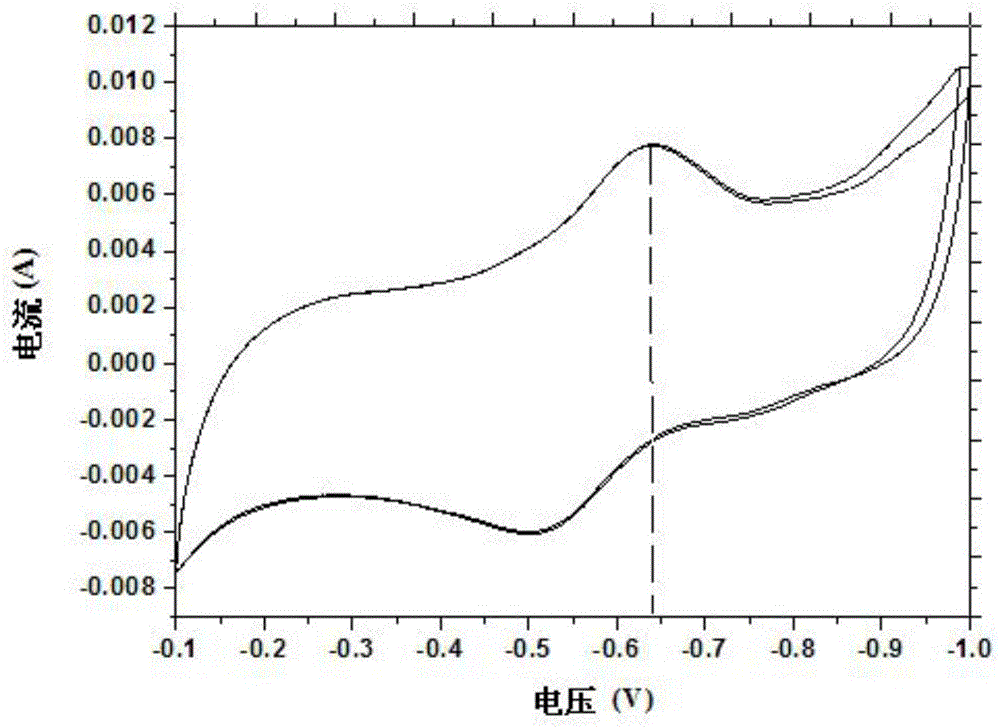Method for fermented production of succinic acid on the basis of electrochemical system for regulating intracellular reducing power regeneration
A succinic acid production, electrochemical technology, applied in the direction of microorganism-based methods, biochemical equipment and methods, fermentation, etc., can solve the problems of differences in electrochemical regulation methods of reducing power, achieve great social significance and economic value, improve yield effect
- Summary
- Abstract
- Description
- Claims
- Application Information
AI Technical Summary
Problems solved by technology
Method used
Image
Examples
Embodiment 1
[0043] This example illustrates the anaerobic fermentation of Escherichia coli AFP111.
[0044] Escherichia coli (Escherichiacoli) AFP111 anaerobic fermentation method is as follows:
[0045] The Escherichia coli (Escherichiacoli) AFP111 in the cryopreservation tube was used as the starting strain, inoculated with 1% (v / v) inoculum in a test tube containing 5 mL of seed medium, and cultivated at 37°C and 200r / min for 12h Obtain the primary seed liquid; inoculate the primary seed liquid into a 500mL Erlenmeyer flask containing 100mL seed medium at an inoculum volume of 1% (v / v), and incubate at 37°C and 200r / min for 6h to obtain the secondary seed liquid . The secondary seed solution was inoculated into a 700mL chemostat device containing 450mL fermentation medium at an inoculum volume of 10% (v / v). At the same time, sterile carbon dioxide was continuously passed into the chemostat to maintain anaerobic conditions. surroundings. Periodically aseptic sampling during the ferme...
Embodiment 2
[0051] This example illustrates a one-step electrochemical anaerobic fermentation method using Escherichia coli (Escherichiacoli) AFP111 under the condition of -0.65V and the addition of 0.05mmol / L neutral red.
[0052] The one-step electrochemical anaerobic fermentation method of Escherichia coli (Escherichiacoli) AFP111 is as follows:
[0053]The Escherichia coli (Escherichiacoli) AFP111 in the cryopreservation tube was used as the starting strain, inoculated with 1% (v / v) inoculum in a test tube containing 5 mL of seed medium, and cultivated at 37°C and 200r / min for 12h Obtain the primary seed liquid; inoculate the primary seed liquid into a 500mL Erlenmeyer flask containing 100mL seed medium at an inoculum volume of 1% (v / v), and incubate at 37°C and 200r / min for 6h to obtain the secondary seed liquid . The secondary seed solution was inoculated into a 700mL cathode chamber containing 450mL of fermentation medium at an inoculum size of 10% (v / v). At the same time, a volta...
Embodiment 3
[0059] This example illustrates a one-step electrochemical anaerobic fermentation method using Escherichia coli (Escherichiacoli) AFP111 under the condition of -0.65V and the addition of 0.1mmol / L riboflavin.
[0060] The one-step electrochemical anaerobic fermentation method of Escherichia coli (Escherichiacoli) AFP111 is as follows:
[0061] The Escherichia coli (Escherichiacoli) AFP111 in the cryopreservation tube was used as the starting strain, inoculated with 1% (v / v) inoculum in a test tube containing 5 mL of seed medium, and cultivated at 37°C and 200r / min for 12h Obtain the primary seed liquid; inoculate the primary seed liquid into a 500mL Erlenmeyer flask containing 100mL seed medium at an inoculum volume of 1% (v / v), and incubate at 37°C and 200r / min for 6h to obtain the secondary seed liquid . The secondary seed solution was inoculated into a 700mL cathode chamber containing 450mL of fermentation medium at an inoculation amount of 10% (v / v). At the same time, a v...
PUM
 Login to View More
Login to View More Abstract
Description
Claims
Application Information
 Login to View More
Login to View More - R&D
- Intellectual Property
- Life Sciences
- Materials
- Tech Scout
- Unparalleled Data Quality
- Higher Quality Content
- 60% Fewer Hallucinations
Browse by: Latest US Patents, China's latest patents, Technical Efficacy Thesaurus, Application Domain, Technology Topic, Popular Technical Reports.
© 2025 PatSnap. All rights reserved.Legal|Privacy policy|Modern Slavery Act Transparency Statement|Sitemap|About US| Contact US: help@patsnap.com



